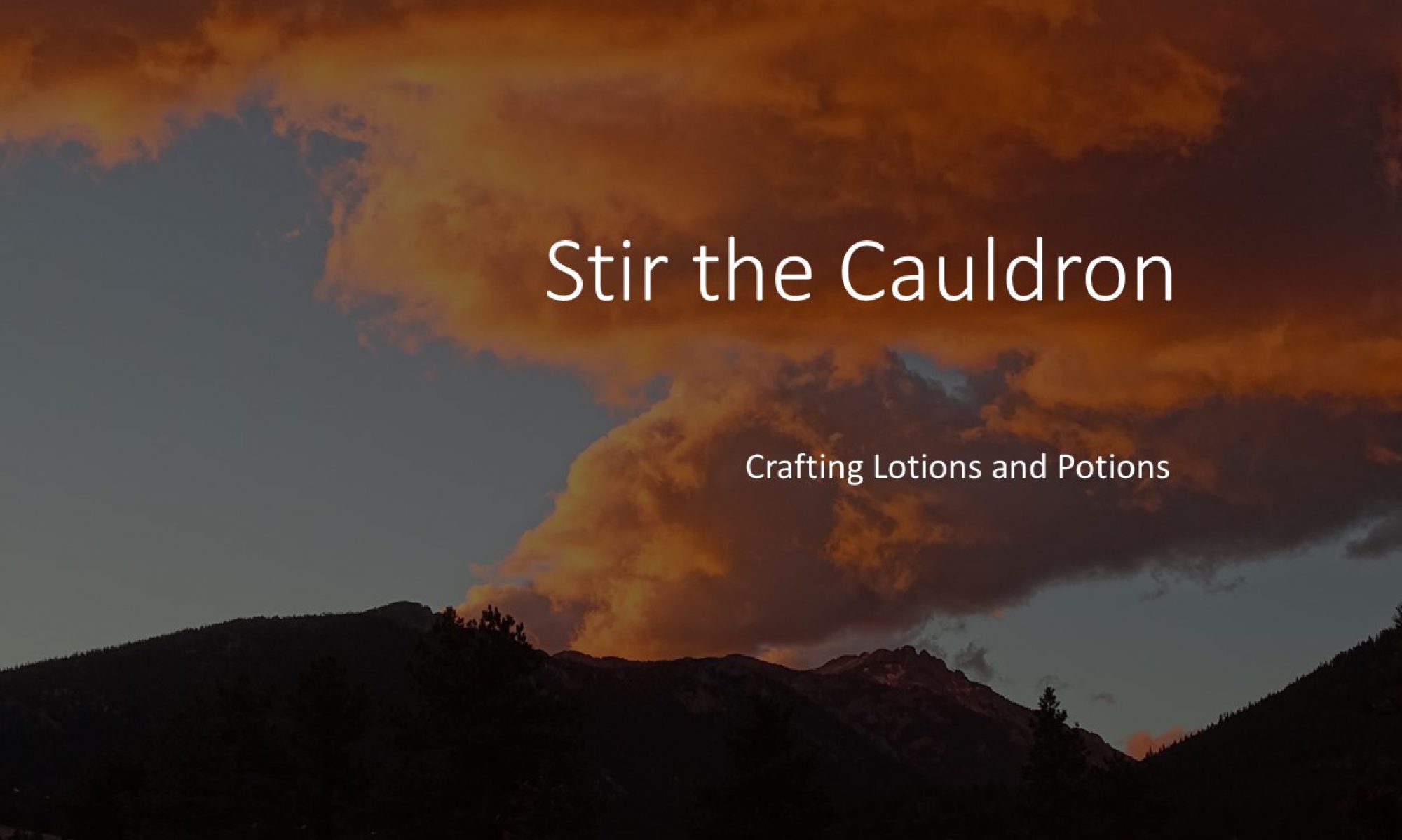
I’ve considered adding book reviews to Stir the Cauldron for a while. Reading Blackthorn’s Botanical Brews by Amy Blackthorn gave me the nudge I needed. After the credits and the contents pages, the Introduction begins:
“People have been fascinated by the idea of bubbling cauldrons full of magic brews since that old time immemorial.”
Overview
Blackthorn’s Botanical Brews is a recipe book with an emphasis on things to drink. Most of the recipes are for cocktails and their mocktail (Sober Alternative) versions. There are chapters on the tools of mixology, and ingredients. There are chapters on making cocktail ingredients from scratch. Amy discusses and describes making tea brews, kombucha and old-fashioned ginger beer. There’s a chapter on love potions (Love Potion, Chapter 9). It’s all interspersed with anecdotes and folklore, and it’s a delight to read.
I first encountered Amy Blackthorn’s work when I bought a copy of Blackthorn’s Botanical Magic. Botanical Magic is one of my reference books for the properties and practical uses of essential oils. But Amy doesn’t limit her descriptions to the physical and therapeutic properties of the oils. She explores the folklore associated with them, and their uses in sympathetic and ritual magic. Botanical Brews takes a similar approach. On one level it’s a “how to mix a drink” recipe book. At the same time it’s a book that offers ways of imbuing a simple drink with magic to turn it into a potion.
Botanical Brews begins with a couple of short chapters that describe the principles of using magic in a kitchen or bar. There is a further chapter on the tools of mixology – bar tools and glassware. The first recipes appear with the descriptions of different styles drinking vessel.
Ingredients
The largest part of the book is devoted to ingredients and recipes, beginning with spirit bases used for cocktails. These are three ways the ingredient descriptions engaged me:

The flavour of the Absinthe that I’ve tried didn’t inspire me. When I’d read this section I sought out a bottle of the better quality stuff, as well as the perforated spoon used to prepare a mixture of the spirit with chilled, sweetened water.
In her section about Bourbon, Amy acknowledges that there are whiskys that aren’t spelled with an “e”. As someone part-raised in Scotland I appreciated her explanation:
“The two spellings come from translating Scots Gaelic and Irish languages (remember that the countries with an E in the name will add it to whiskey, IrEland, UnitEd StatEs.)”
For luck:
“Rinse the bottom of your shoes with Vodka so that, wherever you go today, you are blessed by the moon and with good luck. (I have also done this on the wheels of my wheelchair; both work.)”
There are sections on other ingredients, including fruits and made ingredients. Sloes are the fruit of the Blackthorn tree, so there is a section devoted to them. (Sloes are uncommon in the US and the book is mostly written for an American audience.) One of the made ingredients is Oleosaccharum, made by sprinkling fine sugar over citrus peel to produce a highly concentrated citrus addition for drinks and desserts.
Recipes
The recipes span many styles. The ultimate Bloody Mary is one of many cocktails. (Called the Molotov Cocktail, it includes horseradish, various peppers, and pepper vodka.) A Sober Alternative accompanies each spirited cocktail. (“Having a parent who is an alcoholic, it was important for me to provide Sober Substitutions.”) I was intrigued by some of the non-alcoholic recipes for vinegar-based Switchels and Shrubs. There is a recipe for creating a Symbiotic Culture of Bacteria and Yeast (SCOBY) as the mother for brewing kombucha. Amy has a company called Hoodoo Blends that produces herbal teas, so yes, there are recipes for teas. There are a few deserts, and some meat marinades. There’s even a recipe for a skin toner.
Overall
This is a kind book. It contains frequent encouragement and tips for the reader to practice self-care. There are anecdotes and stories to make a reader smile, alongside some cautionary tales derived from learning lessons along the way.
Having started with a quote from the Introduction, it seems fitting to end with a quote from the closing paragraphs:
“Being alive is magical. Birth, life, and death are each their own magic and mystery. If I can empower one person, show one person that the things we do in our daily lives can bring magic and meaning to an otherwise bleak world, I’ve done a good job.”
I’m in no doubt that Amy Blackthorn has done a good job many, many times.
